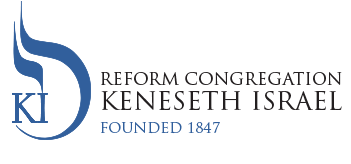We have finally reached the dramatic end of our fall High Holidays/Sukkot season. We begin the celebration of Sukkot on Wednesday evening, October 16. The Sukkot Holiday commemorates the temporary booths that the Israelites erected as shelters on the bank of the Sea of Reeds/Yam Suf, waiting for the splitting of the Sea by G-d Almighty. The splitting of the Sea of Reeds enabled the Israelites to cross over into the Sinai Peninsula on their way to G-d’s Revelation of Torah on Mount Sinai.
The Torah portion to be read in Synagogue on Sukkot describes the Biblical holiday as a seven-day Festival. The first of the seven days is a sacred day/Hag. In the time of the First and Second Temples, our ancestors brought sacrifices to the Temple on each of the seven days. In the ancient Temples, the Israelites and their religious leaders, the Cohanim/Priests and L’vi-im/Temple musicians, marched around the Temple waving the Lulav, the combined palm, myrtle, and willow branches, while holding the Etrog, the citron fruit. We are “commanded” to rejoice, on each of the seven days. “V’samachta V’hagecha/You shall rejoice on your Holidays.” We recreate this march in our Sukkot services as we parade around the sanctuary carrying our Lulavim and Etrogim.
My beloved wife, Ellen, and I honeymooned 43 years ago in Egypt and Israel. In Egypt, we saw that Egyptian peasants who work on the shores of the Nile River today, build temporary huts closely resembling the Sukkot described in the Torah!
Most modern synagogues erect a Sukkah so that congregants can say Kiddush and HaMotzi in the Sukkah in fulfillment of the Mitzvah “to dwell in the Sukkah.” Our son, Avrum, joined me in erecting our own family Sukkah on our patio. There are many laws regarding the building of the Sukkah. Most important, the roof material, called S’chach, must allow the light of the stars to be seen by everyone as we eat our festive Holiday meals in the Sukkah.
The eighth day of the Festival is called Sh’mini Atzeret, the Eighth Day of Assembly. At KI, Sh’mini Atzeret is combined with Simchat Torah, the wildly joyous finale of our month-long holiday season. On Simchat Torah, we all rejoice as the reading of Torah scroll begun one year ago is completed. Immediately, we start again reading the Torah from “B’reishit/When at First.” In Jewish tradition, Simchat Torah is an occasion for exuberant singing and dancing with all the Torah scrolls.
On Simchat Torah, we read the concluding verses of D’varim describing the death of Moses our Teacher. We then begin reading again the Creation story in B’reishit/Genesis.
At KI, Sh’mini Atzeret and Simchat Torah services will take place on Friday, October 25 at 7:00 p.m. Please join us for the festivities, singing, dancing, and refreshments. Please join us for dinner at 5:30 p.m. to RSVP CLICK HERE.
SHIR KI NEEDS YOU!!
Our fabulous volunteer adult choir, Shir KI, is resuming our weekly Tuesday evening rehearsals on October 22, 7 pm in the KI Chapel. We are preparing a fantastic program of Songs of Israel, to be presented on Shabbat evening, December 6. Our songs will demonstrate the eternal link between Eretz Yisrael and Am Yisrael, between the Land and State of Israel and the People of Israel!! The songs we shall sing will be from major periods and events in the 76-year history of Israel.
We need you to sing with us! Previous choral experience is helpful but not essential. We shall sing such beautiful and historic songs as Yerushalayim Shel Zahav, Hallelujah, Uri Tziyon, and many others!
Please contact Cantor Levy or me for additional information. Bring your energy and your voice to our first rehearsal with our veteran singers on Tuesday evening, October 22, at 7 pm in the KI Chapel.
Ellen and all the Tilman’s join me in wishing you both Hag Sameach and Shabbat Shalom, a joyous holiday of Sukkot, a beautiful Shabbat, and Simchat Torah to follow next week.
